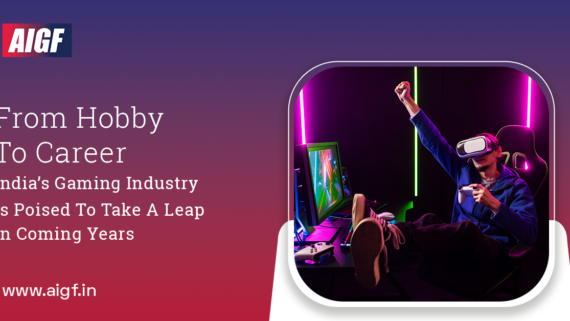Advances in cloud gaming, VR/AR, ray tracing, cross-platform gaming, and esports are collectively transforming the gaming experience.
Exploring The Dynamic Technology Landscape Driving The Gaming Industry
The gaming industry is seeing some amazing tech changes that are changing the way players play in virtual worlds. Cloud gaming, VR/AR, ray tracing, cross-platform games, and the esports scene are all changing the gaming experience. Plus, mobile gaming is taking off, especially for online slot fans. Let’s look at these trends and how they affect accessibility, immersion and visual fidelity in the huge gaming world.
VR and AR – Elevating Immersion and Realism
Virtual Reality (VR) and Augmented Reality(AR) are two of the most recent innovations. VR places players in an immersive alternate reality, while AR places digital elements in the real world. Both of these technologies change the landscape of gaming. They increase immersion and realism. According to a report by Worldwide Information Company, AR/VR revenue is expected to reach $72,8 billion by 2024. Gaming revenue accounts for 80%. The Asia Pacific region accounts for 40% of global VR gaming revenue. As these technologies develop, gaming experiences reach new heights of emotional connection and interactivity.
Hero Vired Founder and Chief Executive Officer, Akshay Munjal, highlighted that Virtual Reality (VR) and Augmented Reality (AR) not only revolutionize gaming but also provide educational opportunities. Hero Vired’s FutureTech courses utilize VR and AR to prepare individuals for a variety of roles in the gaming industry, from game development to event management, thus stimulating industry growth and innovation.
Munjal further said, “The Indian AR and VR market is set to grow at an impressive CAGR of 14.63%, from 2023-2027, culminating in an estimated market size of $1,078 million by the year 2027. With this rapidly growing market volume, VR and AR are also revolutionising gaming, offering immersive experiences that engage players experientially. VR plunges players into new realms, heightening their presence and emotional connection through headsets that allow interaction with environments and characters. AR overlays digital elements onto the real world, enhancing player-environment interaction. These technologies push immersion, interactivity, and realism to new levels, transforming how players experience games.”
“In our FutureTech courses at Hero Vired, we harness VR and AR’s educational potential. Our Certificate Program in Extended Reality (VR+AR) with Snapchat and Unreal Engine, and the Certificate Program in Gaming and Esports with NODWIN Gaming, equip applicants for diverse roles in the gaming sector, from game creation, design to event management, enhancing the industry’s growth and innovation,” he added.
“Enter the realm where reality meets imagination – with Augmented Reality (AR) and Virtual Reality (VR), gaming has turned into an exhilarating fusion of fantasy and reality, taking gameplay to new heights,” Saket Dandotia, CTO, VideoVerse, said, adding, “As per Worldwide Information Company, AR/VR is projected to generate $72.8 billion by 2024, with gaming leading the charge, contributing 80% of this revenue and Asia Pacific region spearheading the global VR gaming market with a commanding 40% share.”
Cloud Gaming’s Liberation of Play
One of the biggest advantages of cloud gaming is that you don’t have to worry about hardware limitations. With services like Google Stadia, NVIDIA GeForce Now, and Xbox Cloud Gaming, you can stream high-end games on multiple devices without having to worry about gaming hardware.
Akshay Munjal emphasizes that cloud gaming is changing the way we play games, making it easier for people to play online, and connecting people all over the world. Cloud gaming brings in new ways of making money, but it also goes hand-in-hand with traditional ways of playing games as people pick and play what they want.
“To sum up, the gaming sector is embracing the growth of cloud gaming services by making infrastructure investments, establishing partnerships, and adopting new business models. Although cloud gaming is convenient and accessible, it also has issues with network infrastructure, latency, and ownership structures. As the gaming industry navigates a new era of experiences that prioritise accessibility, convenience, and changing monetisation techniques, the impact on old gaming models is significant,” he added.
The importance of cloud gaming for the gaming industry cannot be overstated. Saket Dandotia stressed that the gaming industry is working together with streaming service platforms to create accessible and hybrid gaming experiences as the industry adapts to changing gaming models.
He noted, “To keep up with the increasing prominence of cloud gaming, the industry is collaborating with streaming service platforms, enabling accessibility without needing high-end hardware. Collaborations between conventional game developers and technology firms have resulted in the influx of cloud gaming platforms. However, many players opt for hybrid approaches, providing a selection of locally installed and streamed games to accommodate a wide range of player preferences.”
AI and ML – Revolutionising Gameplay
AI and ML are shaking up the gaming industry in 2023. Developers use AI and ML to simplify design, personalise gameplay, and create smart non-player characters (NPCs). Players benefit from adaptive difficulty levels and smart support, increasing engagement and personalising gameplay experiences. Procedural-generated content ensures every game feels different, eliminating the need for predictability and increasing replay value.
Dandotia highlighted the role of AI in creating dynamic game universes and increasing replayability through algorithm-driven innovation. According to Dandotia, AI-based procedural generation reinvigorates player experiences, which concurs with Munjal’s view that it eliminates predictability, ensuring that games remain captivating.
5G – A Catalyst for Innovative Experiences
The introduction of 5G technology has the potential to revolutionise online gaming by removing connectivity barriers. High-speed connectivity and low latency are particularly advantageous for cloud gaming and virtual reality/augmented reality (VR/AR) gaming. The combination of 5G and AR/VR has the potential to make gaming accessible to a wide range of users, regardless of their hardware level. With the upcoming launch of 5G in India, it is expected that the gaming landscape will experience a surge in activity, with gamers in Tier 2 and Tier 3 cities being able to enjoy a new level of virtual adventure.
Conclusion – Embracing the Gaming Renaissance
The gaming industry is in the midst of a technological revolution that is transforming accessibility, immersion and innovation. Virtual and Augmented Reality (VR/AR) is transporting players to another world while cloud gaming frees them from hardware limitations. AI and Machine Learning (ML) are redefining gameplay and 5G is paving the way for new experiences. The gaming landscape of the future is a dynamic combination of technology and creativity, where players are transported to infinite virtual worlds.
Credit: Adgully











Comments
Comments are closed.